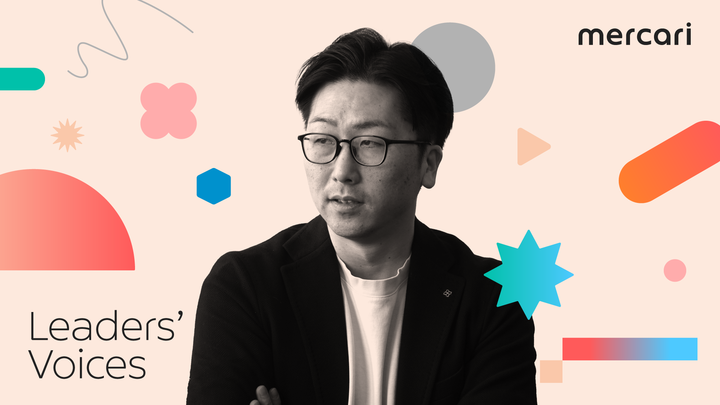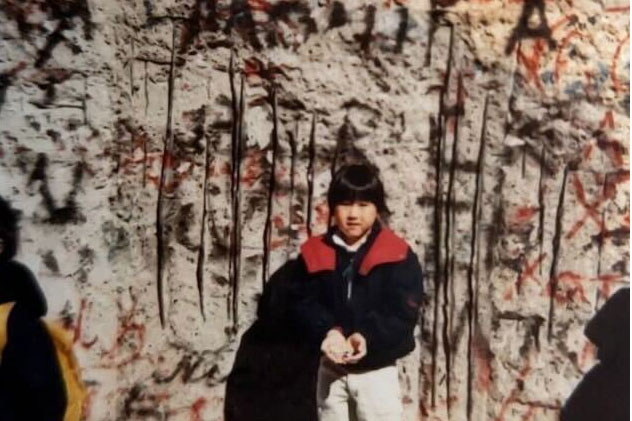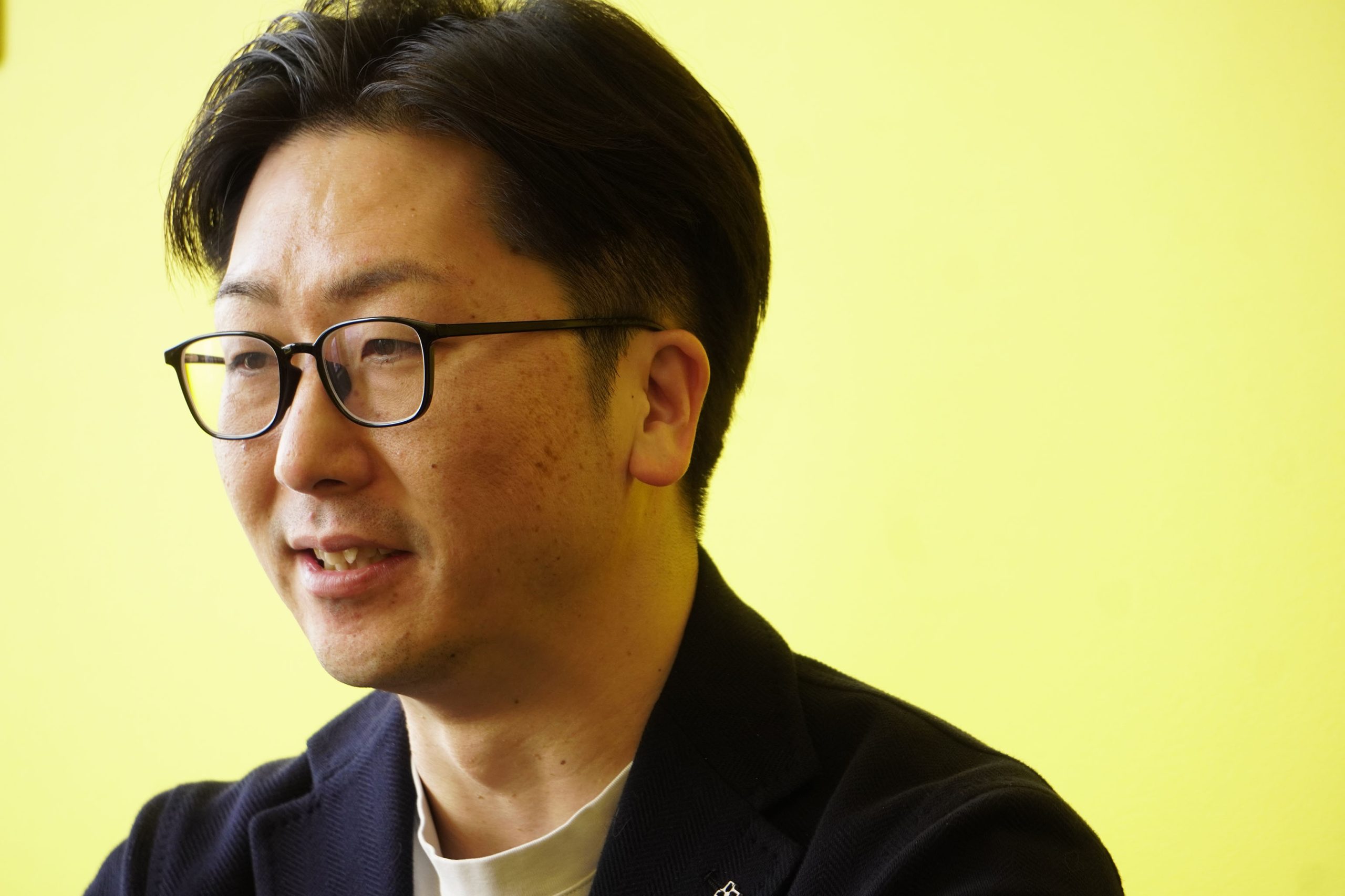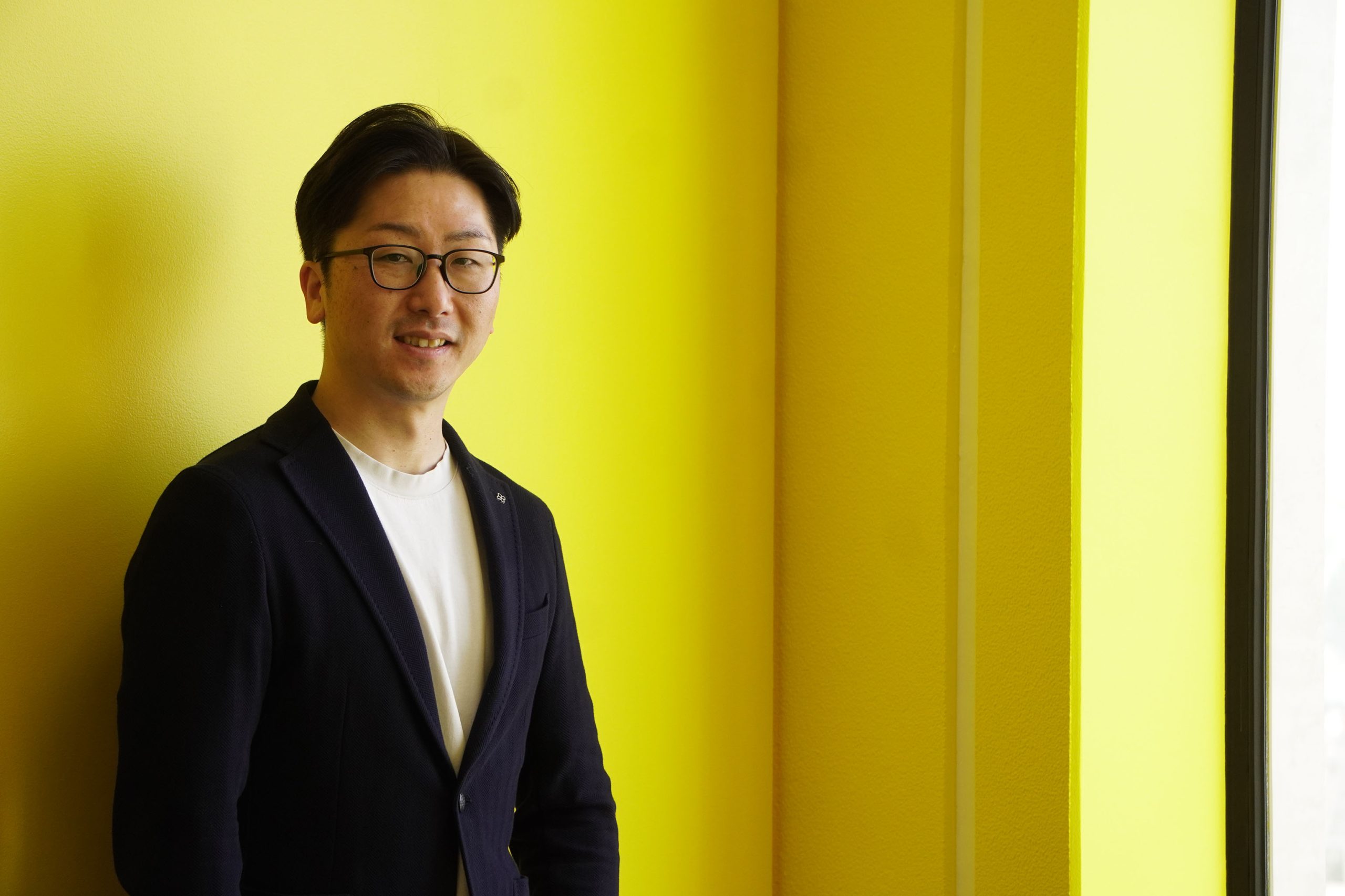
At Mercari, we promote various initiatives with the aim of providing equal opportunities and appropriate support so that anyone can demonstrate our company values, regardless of their background.
Gender equality is one of the SDGs, and the realization of a diverse organization based on our Diversity & Inclusion Statement is deeply interwoven with the mindset behind Mercari Group’s mission, “Circulate all forms of value to unleash the potential in all people.”
In this fourth installment of our series “Creating New Value: Amplifying the Voices of a New Wave of Leaders,” we sat down with Masato Yamamoto (@mark), who currently serves as VP and CEO of Fintech and CEO of Merpay, and is also a member of Mercoin’s Board of Directors. In our conversation, Masato (who goes by his Slack name “Mark”) talked to us about his childhood in Germany and the challenges he faced over the course of his career, and how these experiences shaped his own personal philosophy on diversity.
Featured in this article
-

Masato YamamotoMasato completed his master’s in the Graduate School of Interdisciplinary Information Studies at the University of Tokyo in 2004. After working at NTT Docomo, he began working as the Head of Partner Sales in the Enterprise Division at Google Japan in 2008. In 2014, he became the Head of Business Development and Sales at Square Japan, and in 2016, he became the Head of Apple Pay Merchant Business at Apple Japan. He joined Merpay as CBO in April 2018, where he oversaw general business operations, such as credit design and merchant development. In January 2022, he assumed the role of Merpay CEO. He was later appointed VP and CEO of Fintech at Mercari and joined Mercoin’s Board of Directors in July 2022.
Cultural diversity drives innovation and creativity
──First, I’d like to ask you about your upbringing. I heard you spent some time in Germany growing up?
Yup, that’s right. One of my parents had a job transfer, and so our family relocated to West Germany in 1988 when I was in my second year of elementary school. I joined a Japanese school in Germany, but everything outside of school was so different from what I was used to in Japan. Of course, the language and culture, but even things like the traffic rules were different. I remember being really shocked by this new environment as a kid.
I was also part of a local soccer team in Germany, but I experienced big culture differences while playing sports as well. In Japan, it’s common for teams to emphasize teamwork, but in Germany, I found that there was much more focus on the individual. It was difficult to get playing time unless you believed and showed that you are the best. The culture was more about showing off your own individual skills, rather than playing as a team. However, maybe because of my personality, this change never really bothered me or threw me off. I was constantly thinking about what I could do to succeed on my team and taking action. I wanted to do well, so I would study the areas my team was lacking in and then try to compensate for those weaknesses. It was straightforward in the sense that if you played well and contributed to winning, you would get recognized for it. In the end, my hard work paid off, and I was able to become a regular starter on the team.
 A young Mark playing soccer with his team in Germany
A young Mark playing soccer with his team in Germany
──That sounds like a very formative experience…so at a young age, you were already going through these complex issues of cultural differences and needing to prove yourself to others. By the way, you mentioned your family relocated there in 1988—was this right around the time of the reunification of Germany?
Yes, the Berlin Wall actually fell immediately after my family moved to Germany. Right after the reunification of East and West Germany, we went on a trip to Berlin, and even though I was young at the time, I remember feeling the chaotic after-effects of the reunification. It was now one Germany, but there was still a clear divide in everything from the cultural differences to the wealth gap. However, in just a few years, Berlin was able to get back up and running—it went through major redevelopment and transformed into a whole new city. Especially recently, Berlin has been getting recognized as a city of culture, with its vibrant arts and music scene. It is very different from the Berlin I saw on that trip with my family. Having witnessed this transformation up close, I learned about the benefits of having a mixture of different cultures. I learned that cultural diversity drives innovation and creativity.
It was challenging to adjust to a country that is so different from what I was used to in Japan, but it taught me the importance of taking uncomfortable situations head on rather than running away from them. In the beginning, people did not understand me, and I was often left out. However, by putting the fear and discomfort aside and confronting these situations, I gradually got to know people, and despite the cultural differences, we were able to understand one another.
During my time in Germany, there were countless times when I was excluded just because I am Japanese. It may have been easier to just stay within the Japanese community, but I made a conscious effort to immerse myself in the local culture. Through my experience, I learned first-hand that even if we do not share the same language or culture, we are all human. If we can get to know one another as humans without fearing these differences, in the end, we will be able to understand and find commonalities with one another.
 Visiting the Berlin Wall
Visiting the Berlin Wall
It’s important for us in the minority to shine light on these differences
──Next, I’d like to ask you about your career. You’ve spent a significant amount of your career working at US-based companies, and I remember you mentioning that you faced some challenges being a minority at these companies as well. Could you tell us a little more about that?
I’ve worked at three US-based companies, but at all three of them, I was in charge of launching a new business in Japan. I was a science major in university, but I actually never once thought about becoming a researcher. I was more interested in spreading the application of new technologies around the world, and that’s what led me to get involved in work that was bringing new technologies and services from the US to Japan. The challenging part of this job was that, as you can imagine, if you take a service in the US and try launching it in Japan as is, in many cases, it will not work. It needs to be tweaked and tailored to Japan, so I had to first explain the culture in Japan to the people at headquarters, and then propose a version of the service that would fit the Japanese market. However, the people at headquarters often did not buy my explanation—they believed that the US was the global standard, and that the US version of the service should work everywhere. It was a challenge getting them to understand where I was coming from.
For example, Japan is very unique when it comes to payment systems. In Japan, there is a document called the “ryoshusho” that is used as a proof of payment other than the receipt. This document does not exist in most other countries—there is actually no English word for it either—so of course the people at headquarters are not going to understand what it is or why it is necessary. I had to teach them about the concept of ryoshusho from scratch, describing why it is important and beneficial to have. I grew up with ryoshusho, but I never thought that deeply about it until then. I had to start thinking, “why is ryoshusho so important in my own life?,” which is a question I never thought I’d be asking myself. (laughs)
──I’ve never thought about that either. (laughs) Is there anything you were especially mindful of when trying to convince the people at headquarters?
I always made sure to tell them about the great parts about Japan and our culture first. Instead of asking right out of the gate for a ryoshusho feature, I took time to explain the background of why Japan has this kind of culture, and the beautiful aspects about this culture. Before proposing anything, I wanted them to understand and grow to like Japan as a country and culture first—and sometimes, this meant telling them about myself too, as someone from this culture. This is probably what I spent the most time on.
People in the majority oftentimes do not realize that there are opinions or perspectives that differ from theirs, and I think this can result in them ignoring or disregarding other opinions, even if they don’t mean to. That’s why I believe it’s important for us in the minority to shine light on these differences and why they exist, so that we can get the conversation started and try to meet each other halfway.

Diversity is not just a step in the process, but the ultimate goal
──As someone who has had all kinds of experiences at different companies, what is your view on D&I at Mercari?
When I first joined Mercari, I remember the thing that stood out to me was how seriously the company takes its commitment to D&I. I also saw a deep-rooted drive to act and do the right thing throughout the entire organization. People want to do good and do right, including in terms of ESG, and I related to how everyone at Mercari was focused on putting these thoughts into action.
At the same time, there is still room for improvement. At Mercari, there are many discussions and decisions being made with regard to D&I, but I think there needs to be more diversity in these processes. I think this is especially true for gender diversity. Back when I was working at US-based companies, there were many women at the SVP level. I always learned so much from my women colleagues, because their opinions and ideas were things that I would not have thought of myself. As I mentioned before, diversity is necessary for innovation—it is difficult to generate new ideas if the discussions only involve people in the majority who share similar thought processes. It is incredibly important to create an environment where members of diverse genders and backgrounds are actively participating in discussions.
──Lastly, could you tell us about any new challenges you want to take on as a leader at Mercari, in order to create a more diverse and inclusive organization?
People often say that diversity is a necessary step toward achieving their goals, but the way I see it, the achievement of diversity itself is the ultimate goal. If we look at diversity as just a step toward a larger goal, there is a risk of it being interpreted as just one option, with other alternatives to choose from. As an organization that strives to create new products and experiences, I believe that diversity is a must for Mercari.
For me personally, I want to act as a bridge that helps bring the diverse members at Mercari closer together. I think that most people understand the importance of people in the majority and minority working together with mutual respect for one another. However, the reason why this sometimes does not go as smoothly as we want is because we are not able to notice the differences that exist between the two groups. If we can acknowledge these differences, I believe each of us will be able to expand our ways of thinking, and it will inspire new ideas. And, I can say from my own personal experiences that this will make our organization stronger. As someone who has been a part of both the majority and the minority, I think I can be this bridge—I want to make Mercari a more inclusive workplace and get us closer to achieving the “I” in D&I.



